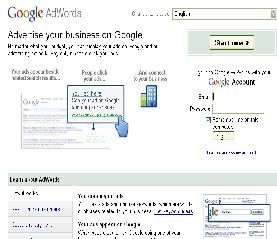eBay is the world's largest online trading community. It is an online auction and shopping website in which people and businesses buy and sell a broad variety goods and services worldwide.
What they are offering to their customers is an opportunity to come together in one Internet site so that customer will be able to buy and trade a wide range of items. Millions of collectibles, decor, appliances, computers, furnishings, equipment, vehicles, and other miscellaneous items are listed, bought, and sold daily as long as it is not illegal and does not violate the eBay Prohibited and Restricted Items policy. It also allows customers to pursue their interests and their passions in the areas of their hobbies and their collectibles.
to come together in one Internet site so that customer will be able to buy and trade a wide range of items. Millions of collectibles, decor, appliances, computers, furnishings, equipment, vehicles, and other miscellaneous items are listed, bought, and sold daily as long as it is not illegal and does not violate the eBay Prohibited and Restricted Items policy. It also allows customers to pursue their interests and their passions in the areas of their hobbies and their collectibles.
Besides that, eBay has built an online person-to-person trading community on Internet by using the World Wide Web. It means that buyers and sellers are brought together in a manner where sellers are permitted to list their items for sale and buyers are allowed to bid on the items which they are interested on. Further, all eBay users also can browse through listed items in a fully automated way as all items are arranged by topics because each type of auction has its own category. As a result, it is easier for them to find their wanted item.

Moreover, eBay has offers several types of auctions such as auction-style listings, fixed price format and auctions. All these auctions allow sellers to offer one or more items for sale in a manner that convenience the buyer. eBay also provide same useful sites that provides information about popular search terms, trends, most-watched items and most-unusual items in order for users could to on and nominate listings that they found. For example, eBay Pulse. SquareTrade has been provided by eBay that provide mediation services for buyers and sellers to resolve any issue that was arise.
eBay allows people to enjoy the experience of the shopping bazaar as they really enjoy the hunt and looking around for merchandise. They also enjoy the competition of the bidding process because everybody likes to get a bargain, and may in some way, shape, or form, like to haggle a little bit over the price.
 Another factor to consider is that eBay gives sellers the ability to market their products to millions of daily visitors makes and it is one of the most efficient ways to sell just about anything. eBay also enables user to find a great deal on all kinds of items - millions to choose from because everything from autographed Elvis records to brand new computers can be found. Therefore, a lot of people like to do transactions with eBay.
Another factor to consider is that eBay gives sellers the ability to market their products to millions of daily visitors makes and it is one of the most efficient ways to sell just about anything. eBay also enables user to find a great deal on all kinds of items - millions to choose from because everything from autographed Elvis records to brand new computers can be found. Therefore, a lot of people like to do transactions with eBay.
Furthermore, eBay allows people back to the times that connect them with some very fond and special early childhood memories such as collecting baseball cards to toy soldiers to Barbie dolls to doll houses, and so forth. eBay also allows people to make that connection and relive a lot of those very vivid and very fond memories that they have from the earlier period of time.
eBay has attempted to listen to their customer and develop and provide new services in addition to the ability to just buy and sell when growing pains occurred. These new services include everything from allowing their customers to list their items by a photograph in the eBay gallery, the feedback forum and establishing categories that deal with higher priced items and collectibles and automobiles. And at the same time, eBay has maintaining the level of growth that is just really phenomenal for any business, let alone an Internet business.
eBay has attempt to understand what particular rules and regulations may apply when it has trading sites in other country such as Canada, the United Kingdom, Germany and etc and also moving into the Asian market. They try to get a lay of the land to understand how a business may or may not operate and what considerations a business may have to factor in.
may apply when it has trading sites in other country such as Canada, the United Kingdom, Germany and etc and also moving into the Asian market. They try to get a lay of the land to understand how a business may or may not operate and what considerations a business may have to factor in.
Besides that, eBay has created a series of co-branded sites through the AOL properties, and having a number of arrangements with smaller sites that go back several years in order to encourage people to come into the eBay site.
Related Links
1. http://pages.ebay.com/education/tutorial/course1/commercial/3.html
2. http://www.cs.brandeis.edu/~magnus/ief248a/eBay/history.html








